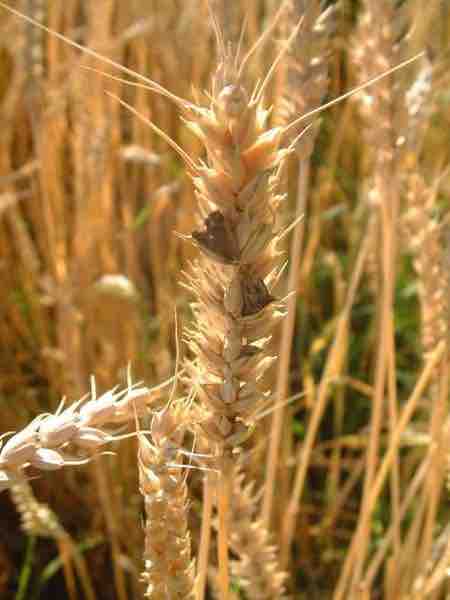Ergot poisoning is a type of illness associated with the ingestion of alkaloids produced by the fungi Claviceps purpurea (C. purpurea). Claviceps purpurea is a fungus classified under the fungi genus Claviceps. This specific type of fungus is found on rye, and also on crops like wheat and barley. In addition, Claviceps purpurea can effect plants and crops that are typically considered forage plants. Thus, this type of fungus can also result in diseases within livestock.
The life cycle of C. purpurea begins when an ergot kernel, called a sclerotium, infects the host. The fungi continues to undergo proliferation and destroys the plant ovary. The first stage of ergot infection is a white soft tissue, called Sphacelia segetum, that drops out of the host. The white soft tissue contains asexual spores which infect additional host plants. This tissue, present within the host, is then converted into a hard Sclerotium clavus within the husk. At this specific stage, the alkaloids and lipids accumulate .

Example of Ergot on Wheat
This image shows ergot on a wheat spike.
The alkaloids, responsible for the ergot poisoning, are naturally occurring compounds that are mainly comprised of basic nitrogen atoms. Alkaloids are produced within various organisms as a secondary metabolite. Secondary metabolites are most commonly produced in plants as a defense system. The alkaloids produced by fungi are often toxic. Specifically, the alkaloid produced by Claviceps purpurea is ergoline based.
In cases of ergot poisoning (also known as ergotoxicosis or traditionally, Saint Anthony's Fire) alkaloids accumulate in the system due to the consumption of contaminated grain products. The symptoms which present in individuals with ergot poisoning can be classified as convulsive symptoms and gangrenous symptoms. The convulsive symptoms include seizures and effects on the central nervous system that range from hallucinations to psychotic episodes. The gangrenous symptoms are a result of vasoconstriction induced by the alkaloids. Peripheral systems, such as fingers and toes, are typically affected. More recently, ergot poisoning has been associated with an increased intake of ergot-based drugs. These drugs include those that promote vasoconstriction for treating migraines and Parkinson's disease.